When unusual problems present, always ask about travel
A healthy 10-year-old male presents with seven discrete, very pruritic sores on his back. They seem to have originated as typical mosquito bites while he vacationed in Costa Rica for 7 days. The family returned home 12 days prior to presenting to their primary care physician, and since then, the lesions have been slowly but progressively getting larger. The patient and his father also had complained of some transient nausea and vomiting symptoms that have since resolved. Otherwise, the patient has had no other complaints and no fever noted. Some lesions were noted to have had some intermittent drainage. The first time the patient was evaluated, he was diagnosed with impetigo and cellulitis and treated with cephalexin. This did not appear to work, as the lesions continued to get somewhat larger (Figure 1), with more intermittent oozing of material. The patient was then prescribed clindamycin, which he would not take after the first few doses. As expected, this also did not seem to have any benefit. Shortly thereafter, the mother noted the appearance of dark, black material oozing from one of the lesions with some bubbles (Figure 2).

The exam was otherwise normal, with normal vital signs.
What’s your diagnosis?
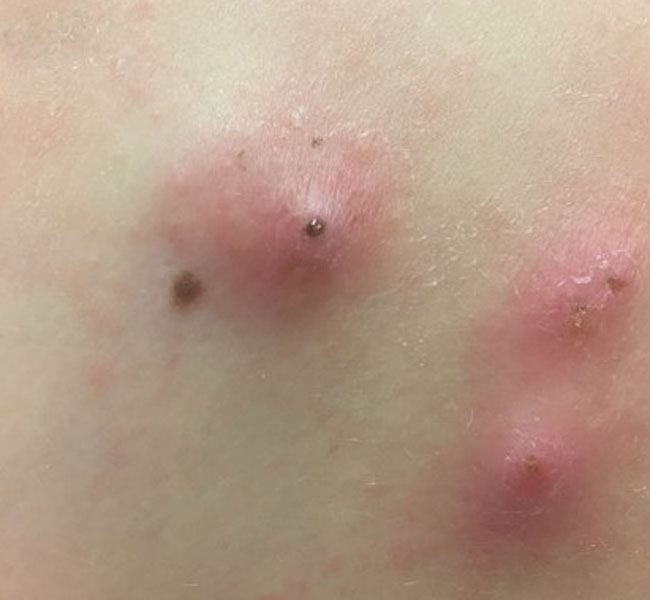

A. Cutaneous myiasis
B. Multifocal MRSA impetigo
C. Cutaneous leishmaniasis
D. Mycobacterium fortuitum
Answer and discussion
The answer is A, cutaneous myiasis, which is an infestation with the larvae of the human Botfly (Dermatobia hominis). This fly actually has the capability of capturing a bloodsucking insect, usually a mosquito, and depositing her eggs on the mosquito’s abdomen. When the mosquito lands on a mammal to take a blood meal, the larvae, sensing the warmth of the mammal, hatch from the eggs and migrate to penetrate the skin, usually at the same site as the mosquito’s proboscis. From there, the larvae go through several stages of development and emerge, dropping to the ground and pupating into a new fly. This process takes 3 to 4 weeks to complete. When it occurs in humans, most people do not want to wait for this process to end by natural progression, but rather to have these larvae removed. Such was the case with this patient (Figures 3 and 4), who had these larvae surgically removed in the dermatology clinic. For those who keep these columns, I featured a similar case in the December 1991 issue of a child from Panama (Figures 5 through 9). After light sedation, the larvae were removed through a small incision over the opening of each lesion. Secondary infection is about the only complication. Tropical vacations are very popular, especially during the wintertime. Therefore, as in this case, this problem can be seen in children returning from a tropical vacation, any time of the year.


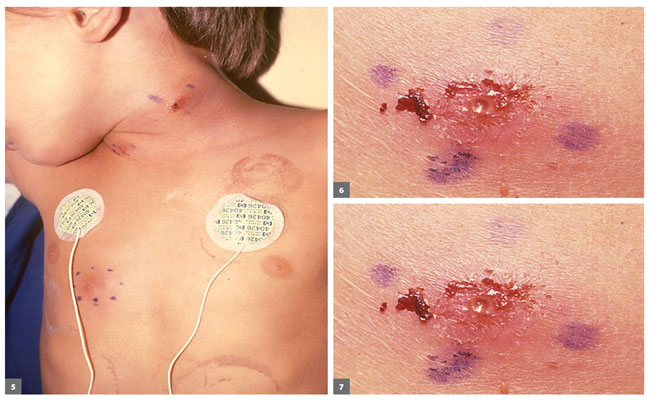
Multifocal MRSA impetigo would be a bit unusual, especially on the back, and it would eventually appear significantly differently in most cases, with a typical “honeycombed” crust overlying the site (Figure 10). While a myiasis lesion with an overlying crust may initially resemble impetigo, once the cap over the lesion is removed, the “volcanic” appearance can be seen, as shown in Figure 7. Additionally, seeing some drainage “erupting” from the volcanic opening, which may include periodic bubbling, would also imply that there is something liv-ing within the lesion. Impetiginous lesions can usually be cleared with good hygiene and a topical antimicrobial, such as mupirocin. In more severe cases, an oral anti-staph agent may be needed.


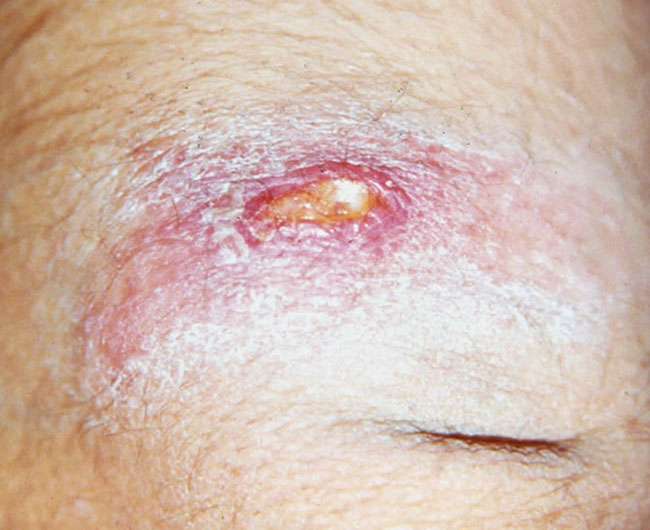
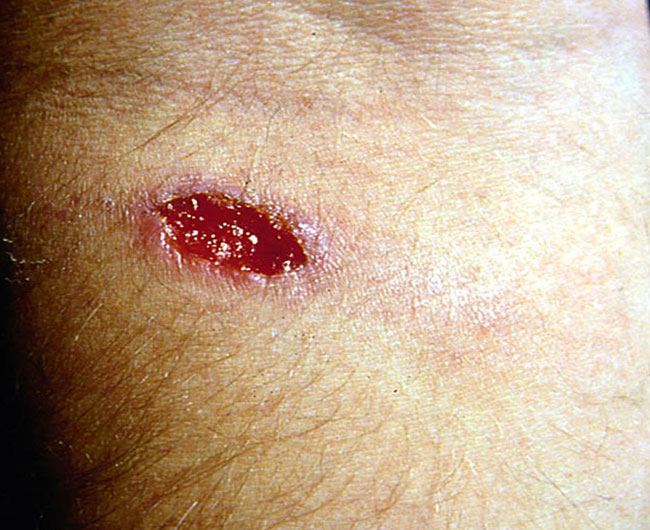

Leishmaniasis refers to an infection caused by the parasite from the genus Leishmania, to which 32 species belong, and are spread by the bite of the sand fly. After transfer of the promastigote from the fly to the cutaneous site, they penetrate the local macrophage, within which the organisms transform into amastagotes that are subsequently released to infect other macrophages. Depending on the species, the infection may remain local, causing cutaneous leishmaniasis (Figures 11 through 16), producing a slowly progressive, ulcerative lesion without the virtual volcanic appearance of myiasis, or it may spread through the reticuloendothelial system to visceral organs or the mucous membrane of the upper respiratory system (a “New World” disease). Mucosal disease can also occur by direct extension from a facial lesion (Figures 17 through 19). While simple cutaneous disease may require no specific therapy, the more complex disease involving the mucous membranes or viscera requires expert management, usually by a dermatologist or an infectious diseases specialist (or both). For additional reading, we have featured three cases of leishmaniasis over the years; the first was in the August 1991 issue, the next was in March 1996 (Courtesy of David Goldberg, MD) and the third was in January 2014 (courtesy of Roberto P. Santos, MD)
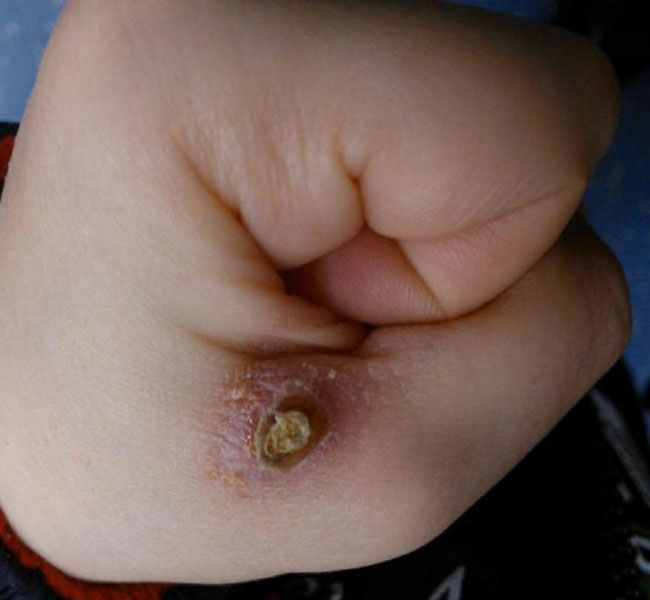
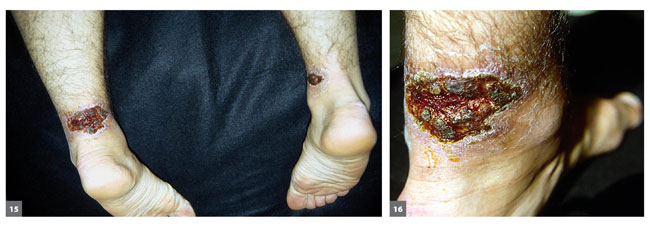

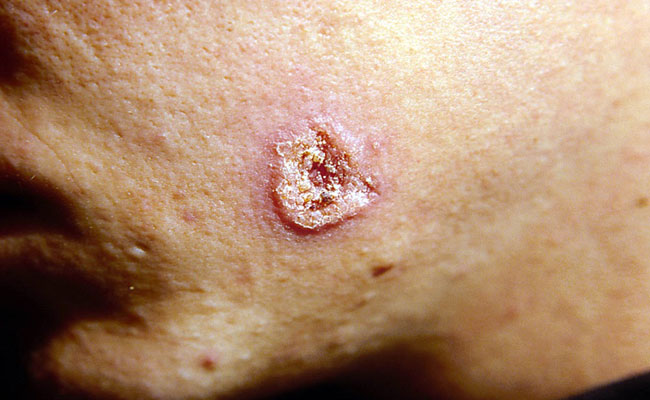


Nontuberculous mycobacteria (NTM) species can produce a variety of infections, from simple cutaneous lesions to cervical lymphadenopathy to lower respiratory tract infections (cystic fibrosis and other immunocompromised patients), and more. Mycobacterium marinum is likely responsible for most cutaneous cases. Others, such as M. fortuitum, can also produce a chronic sore on the skin. They all require inoculation of the organism, usually through minor injury, which would be very unusual to see at multiple sites, especially the back, unless associated with tattooing. An NTM cutaneous lesion may look similar to myiasis and leishmaniasis at some point, but the history of progression and subtle differences in appearance should be discernible. Excisional biopsy of simple, solitary lesions (Figures 20 and 21) is usually curative; however, an infectious diseases specialist should be consulted for potential medical therapy. To see additional cases of cutaneous NTM, I would refer you to the November 2007 and the June 2018 columns.
Columnist comments: I want to thank Carly Lyons, MD, and Emily Stewart, MD, both from Baylor Scott & White Health, for contributing this case.
- For more information:
- James H. Brien, DO, is with the department of infectious diseases at McLane Children’s Hospital, Baylor Scott & White Health, and an adjunct professor of pediatrics at Texas A&M College of Medicine in Temple, Texas. He also is a member of the Infectious Diseases in Children Editorial Board. Brien can be reached at jhbrien@aol.com.
Disclosure: Brien reports no relevant financial disclosures.









